Great Lakes ice cover is dwindling
Tim's Weather Takeaways: Great Lakes ice cover is dwindling
This winter may end up among the top five winters with the least amount of ice cover on the Great Lakes.
Chicago - The amount of ice on the Great Lakes has dropped dramatically over the past few weeks.
This winter, the concentration peaked at 16.02 percent back on Jan. 22. That was after nine straight below-average days at O'Hare, the coldest span of this winter so far. In the past nearly two weeks, the amount of ice has dropped more than 50 percent. Tuesday should be the 16th straight day with above-average temperatures.
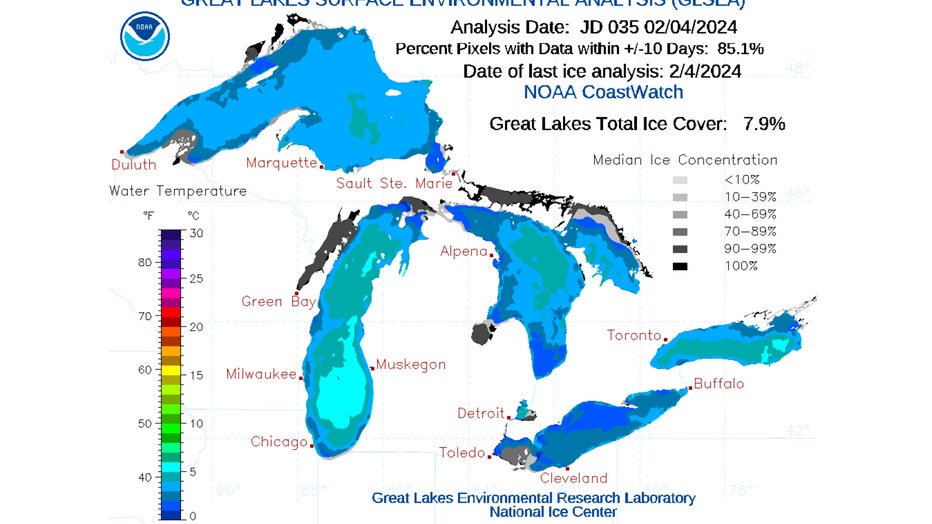
Great Lakes Ice Concentration As Of 2/4/24
According to the Great Lakes Surface Environmental Analysis, we started this week with just 7.9 percent total ice cover. The departure from average as of this week is startling. Last year, at this time, we had almost three times as much ice cover. On Feb. 4, 2023, we had 21.6 percent ice cover.
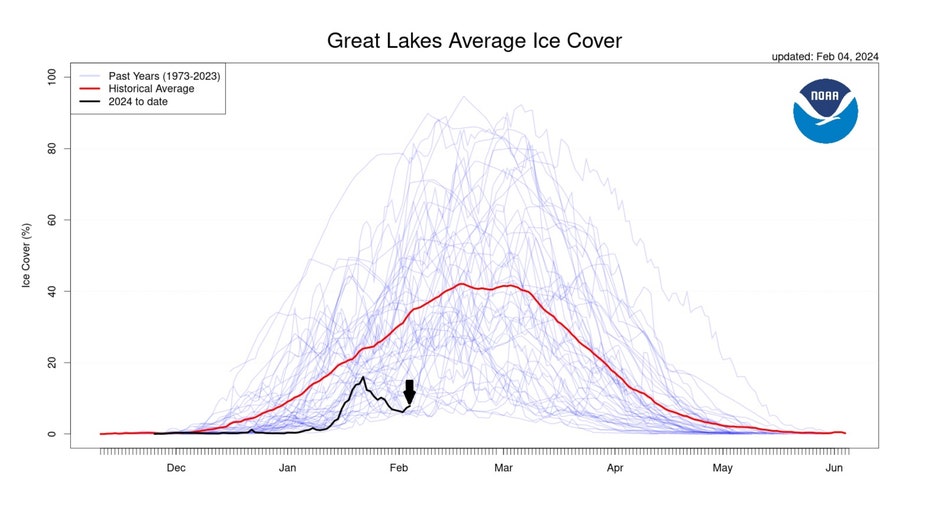
Great Lakes Average Ice Cover
Ice cover on the Great Lakes has never been above average at any point this winter. Based on longer-range forecasts, it is very doubtful it will rise above average through the end of the season. NOAA's Great Lakes Environmental Research Laboratory has records of ice cover dating back to the 1970s.
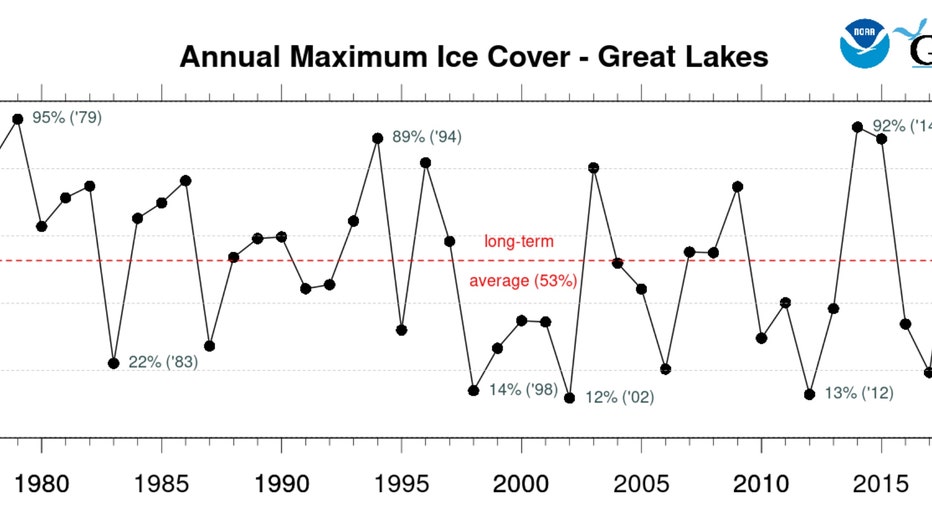
Annual Maximum Ice Cover
There can be big shifts regarding annual maximum ice cover from one year to the next. The maximum ice cover reached around 40 percent in 1976, then jumped to nearly 90 percent in 1977. This year's maximum ice cover will likely be among the top five lowest years.
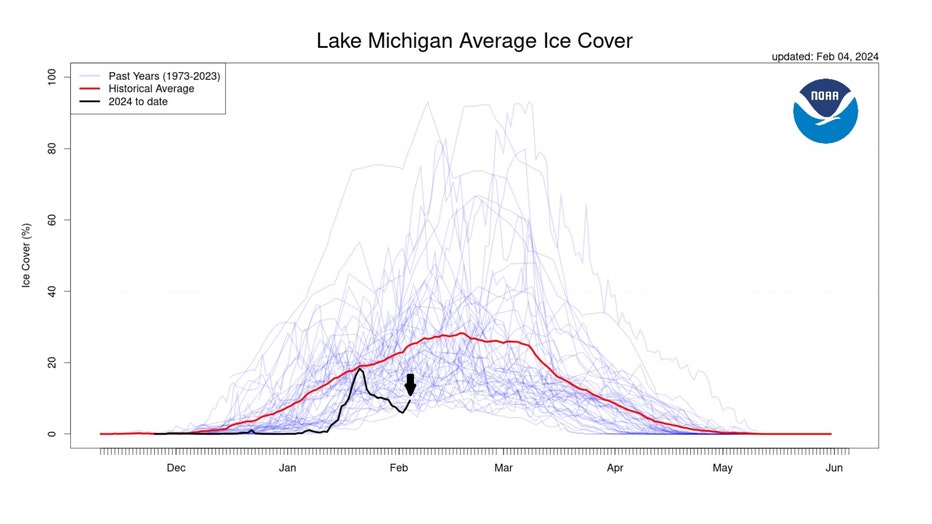
Lake Michigan's ice cover is at 9.41 percent after a peak ice cover of 18.28 percent on Jan. 21. There is always variability in ice cover from one year to the next, but over the long term, there has been a significant decline in the amount of ice on the Great Lakes. The Great Lakes are on thin ice and warming winters are the culprit.
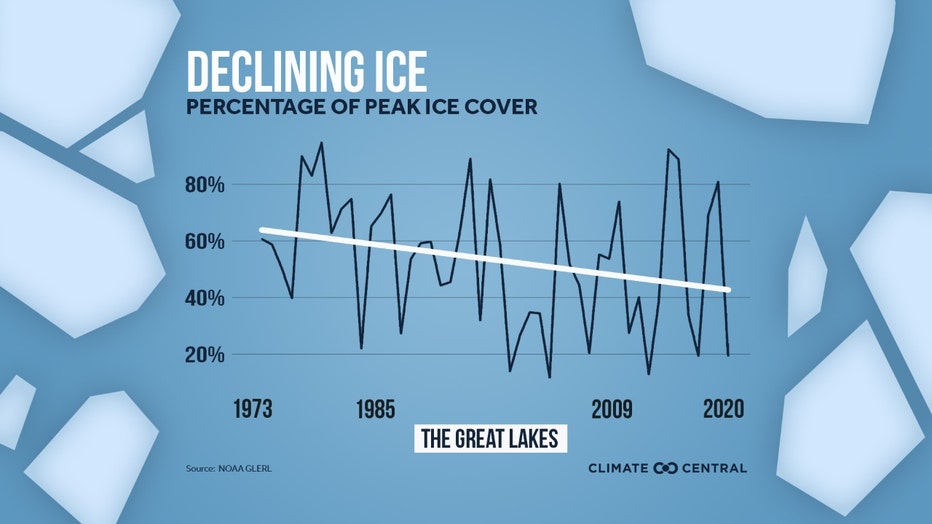
Over the 47 years from 1973 to 2020, peak ice cover has dropped 22 percent, according to an analysis by Climate Central. They concluded the decline is "driven by warming air and water temperatures due to climate change." The average ice cover on the Great Lakes from 1973-2020 was 53 percent. At our peak this winter, the highest it reached was around 30 percent of that number.
About 90 percent of all the freshwater in our country is found in the Great Lakes. They also hold around 20 percent of the world's total supply. Here are some of the impacts declining ice has according to Climate Central:
"Great Lakes fishing contributed $2.2 billion to the U.S. economy in 2016, representing over 11 million fishing trips. Among these are ice fishing trips—a traditional, cultural practice originating among indigenous communities and popular among modern recreational anglers. In recent years, finding adequate ice cover and thickness has made the activity difficult and highly dangerous. The endurance of other historical and cultural connections with Great Lakes ice, such as ceremonial practices, ice skating and the use of ice roads, is at risk of slipping through our fingers as our climate only continues to warm."
Over the next few weeks, conditions will not be very conducive for building back ice cover on the Great Lakes. A relatively mild pattern should be in place at least into the middle of this month.
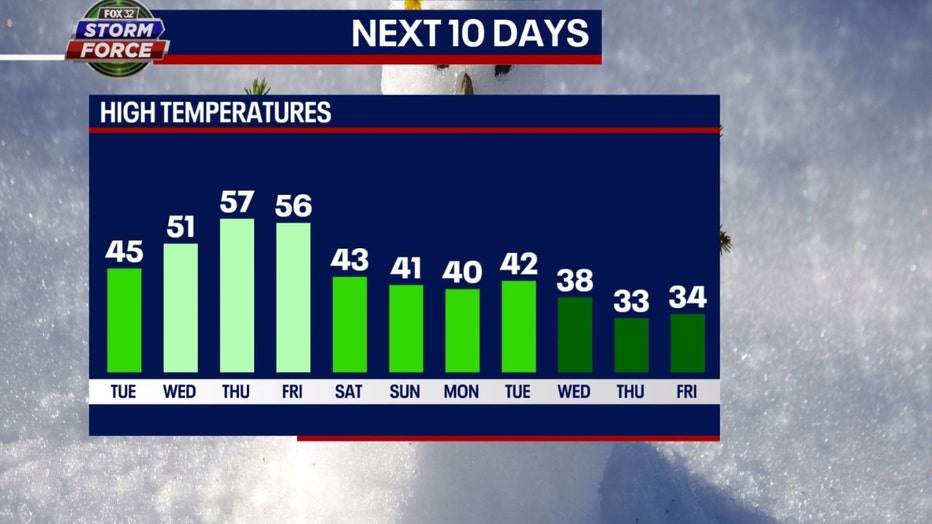
Our Fox Model forecast of high temperatures has highs at least in the 40s through the 13th of February. There are some signals in the longer-range forecasts that colder air could be coming just beyond that. It doesn't look like the brand of cold needed to significantly build back ice is coming soon according to the latest computer model runs. The longer-range temperature outlooks from the Climate Prediction Center tend to agree. It keeps a relatively milder pattern in place through the 15th and then signals a change coming afterward.
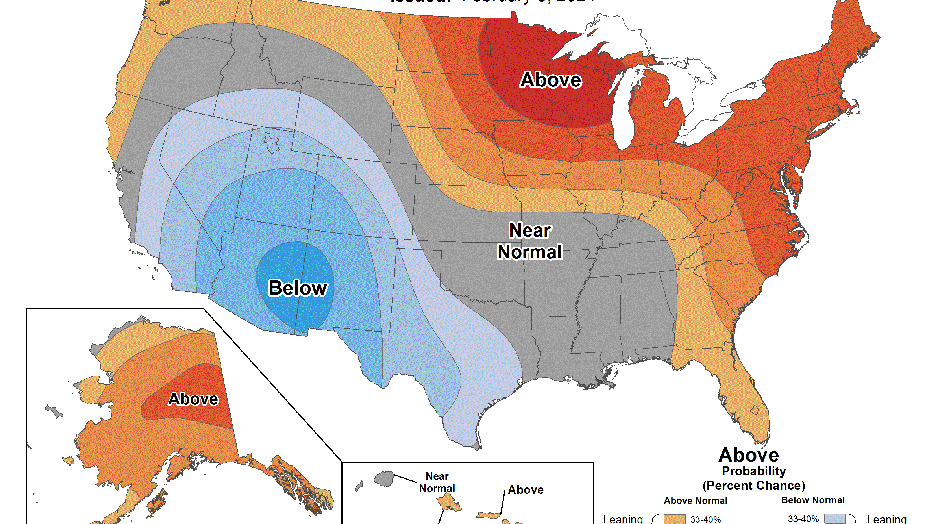
The six-10 day temperature outlook forecasts northern Illinois and Indiana to be "likely above" normal overall. This covers the period from next Sunday through the following Thursday.
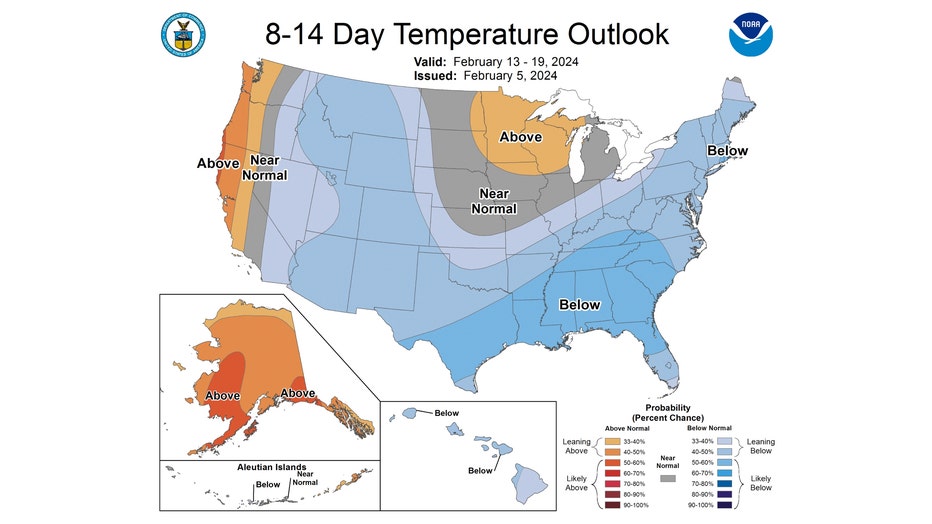
The 8-14 day temperature outlook may be signaling a transition to a colder pattern. It favors us to be near normal. This covers the period from next Tuesday through the following Monday. There is a lot more blue on this map compared to the six-10 day outlook. So we may not be finished this February with building more ice on the Great Lakes, but there is no reason to believe we will get back anywhere close to average.

